Industry News (74)
RadTech Announces Call for Papers for 2022 Conference & Exposition
FOR IMMEDIATE RELEASE
Contact: Mickey Fortune, 240-643-0517, mickey@radtech.org
RadTech Announces Call for Papers for 2022 Conference & Exposition
Chevy Chase, MD (June 7, 2021) RadTech International North America is accepting abstracts for the 2022 RadTech UV+EB Technology Conference & Exposition, scheduled for May 10-12, 2022 at the Hyatt Regency Orlando in Orlando, Florida.
We are looking for high quality technical papers that discuss advances in LED Technology, Additive Manufacturing/3D Printing, Electron Beam, Coatings, Materials, Formulation, Chemistry, Equipment, Testing, and more. Please see a complete list of suggested topics here: https://www.radtech2022.com/call-for-papers.
Technical papers should be no longer than 25 min in length, with five minutes for Q&A. The online Abstract Submission Form should be completed prior to September 24, 2021. Descriptions should be sufficiently comprehensive to allow assessment of the scope and content of papers by the Conference Committee. The committee will select papers, and speakers will be notified whether or not they have been selected by November, 2021.
For more information, visit https://www.radtech2022.com/call-for-papers.
Mickey Fortune Named Associate Executive Director, Education and Outreach at RadTech
FOR IMMEDIATE RELEASE
Chevy Chase, MD (May 3, 2021) RadTech--The Association for Ultraviolet and Electron Beam (UV+EB) Technologies, is pleased to announce that Mickey Fortune has been promoted to Associate Executive Director, Education and Outreach. Mickey has been with RadTech for nearly 20 years, spearheading a number of important new opportunities and initiatives, while overseeing RadTech conferences and educational programming.
“To the great benefit of our nonprofit community, Mickey approaches his work with engagement, creativity, leadership, and the desire to provide tremendous service," says Gary Cohen, Executive Director of RadTech. "His recent accomplishment of almost single handedly developing, shooting video, and editing our important new environmental health and safety video series, is a prime example of his wide ranging skills and contributions."
In addition to his role within RadTech, Mickey will continue to provide key services to the International Ultraviolet Association (IUVA) to support their mission to advance ultraviolet technologies for public health and the environment. With unprecedented interest in UV disinfection technology as a result of the global COVID-19 pandemic, he has worked tirelessly with IUVA members to produce vital educational opportunities, advancing technical collaboration and public knowledge of UV technology.
Printing Industry Veteran Dan Marx Joins RadTech Sustainability Initiative
FOR IMMEDIATE RELEASE
April 27, 2021: Chevy Chase, MD - RadTech--The Association for Ultraviolet and Electron Beam (UV+EB) Technologies, is pleased to announce that Dan Marx, a printing industry veteran with nearly three decades of industry experience, will help lead the group's Sustainability Committee, chaired by Todd Fayne, PepsiCo, and David Biro, Sun Chemical.
Marx will work to advance the Sustainability Committee's goals of developing appropriate and accurate data and information on the sustainability profile of UV+EB technologies. He will also monitor ongoing developments in UV+EB sustainability, and engage with NGOs and industry nonprofits to develop content and foster discussion among industry thought leaders.
“I’m excited to be working with the RadTech Committee and staff,” said Dan Marx, “and working to demonstrate the favorability of UV/EB technology within package production, printing, and a variety of other manufacturing segments. My past involvement with RadTech has given me a working knowledge of the technology, the people, the organization, and its goals.”
“Dan has long been a friend to RadTech,” says Gary Cohen, Executive Director, “and served for a number of years on our Printing and Inkjet Committees. He will bring to the position his knowledge, experience, and commitment to furthering the Committee’s goals. We’re happy to have him on board.”
Prior to joining the RadTech team, Dan Marx worked for more than 28 years with the former Specialty Graphic Imaging Association (SGIA), now called PRINTING United Alliance. During his tenure, he focused on topics including environmental management, workplace safety, new technologies, identification of trends, and the collection and analysis of industry data.
To learn more about the RadTech Sustainability Committee, please contact uveb@radtech.org.
RadTech Announces New Board Members, Secretary, Honorary Lifetime Member
FOR IMMEDIATE RELEASE
Contact: Gary Cohen, 240-497-1242, gary@radtech.org
RadTech Announces New Board Members, Secretary, Honorary Lifetime Member
Chevy Chase, MD (April 21, 2021) RadTech--The Association for Ultraviolet and Electron Beam technologies (UV+EB) is pleased to announce two new Board members: Dr. Eric Nelson, Staff Scientist, 3M Corporate Research Process Laboratory Radiation Processing Group, and Dr. Kejia Yang, Materials Engineer at Align Technology. Drs Yang and Nelson were selected to fill board openings and will serve through 2022. In addition, Mike Bonner, VP - Engineering & Technology, Saint Clair Systems Inc., has been elected to join the RadTech Executive Committee as Secretary.
2021 RadLaunch Award Winners and Virtual Awards Ceremony
April 28, 2021, 3:00-4:00 PM EDT
RadTech, the nonprofit for UV+EB technology, has announced the winners of the 2021 RadLaunch Awards, which will be presented during an Awards Zoom Program, 3:00 - 4:00 PM EDT on April 28, 2021.
In addition to recognizing four RadLaunch winners, the judges offered a special Unique New Technology Award to recognize a potentially disruptive formative composites process.
The Awards Zoom Program, moderated by Darryl Boyd, US Naval Research Laboratory, and Mike Idacavage, Radical Curing LLC., is supported by RadTech members, our sponsors and RadLaunch platinum sponsor Azul 3D, and will feature short presentations by each award winner.
2021 RadLaunch Award Winners
Biomass Derived Chromophores for Radiation Curing
Prof. Jayaraman Sivaguru et al, Bowling Green State University, and Gregory Carroll, Ph.D., NRC Senior Research Associate at the Air Force Research Laboratory
The vibrant colors that enhance Nature’s elegance play a critical role in various chemical and biological processes. Translating these colors, which are dictated by the presence of chromophores, to curing technology is challenging as it requires rational manipulation of excited-state properties.
Jayaraman Sivaguru, Ph.D., the Antonia and Marshall Wilson Professor of Chemistry and Associate Director, Center for Photochemical Sciences, at Bowling Green State University, Ohio, is leading the effort in collaboration with Gregory Carroll, Ph.D., NRC Senior Research Associate at the Air Force Research Laboratory, Sruthy Baburaj, graduate student at Bowling Green and Sheila Asiago, PhD candidate at Bowling Green, as they explore translating biomass derived compounds that can be fine-tuned for radiation curing with both UV and visible light.
The biomass derived compounds are fine-tuned to feature superior photochemical properties than the conventional compounds featuring similar chromophores. Sivaguru's team is working on translating these novel biomass derived compounds as curing systems with high efficiency.
Mighty Buildings
A construction technology company based in Oakland, California, Mighty Buildings is innovating the construction industry by creating beautiful, affordable and sustainable homes using 3D printing, advanced materials and robotics automation. Co-founders Alexey Dubov, Sam Ruben, Slava Solonitsyn and Dmitry Starodubtsev aim to unlock productivity in construction by combining 3D printing and prefab, making construction more sustainable, efficient and affordable.
The company's large-scale 3D printers use a proprietary thermoset composite material that the co-founders invented, Light Stone Material (LSM), that can be 3D printed and that hardens almost immediately thanks to a UV-curing process, while also maintaining cohesion between layers to create a monolithic structure. LSM is four times lighter than concrete, has a high thermal resistance and is watertight, sturdy and fire resistant. This 3D printing technology allows Mighty Buildings to produce modular houses and building components much faster than traditional construction.
Mighty Buildings has a near-zero waste production process, preventing 1,100 - 2,000 kg of CO2 emission per 3D printed home. Committed to achieving Net-Zero by 2028, the company is 22 years ahead of the construction industry. Certified under California’s Factory Built Housing program to build units using 3D printing, the company is the first company to achieve certification under the UL 3401 standard for evaluating building structures and assemblies. Mighty Buildings is backed by notable international and Silicon Valley tech investors, including Khosla Ventures, Zeno Ventures and Y Combinator.
3D Printed Ceramic Resins
Tethon 3D
Tethon 3D, Omaha, Nebraska, manufactures universal UV photocurable ceramic resins that are used in numerous SLA, DLP and other vat polymerization 3D printers, and has an R&D facility that formulates custom additive manufacturing UV curable materials. Executive chairperson Karen Linder, Trent Allen, CEO and Gregory Pugh, CTO, lead the company to produce high quality ceramic materials for diverse industrial, consumer and design industries.
With over 1,000 customers in 40 countries, Tethon 3D serves clients in aerospace, electronics, defense, energy, biomedical and other industries that desire the physical properties of ceramics and the complex geometries made possible by 3F printing.
The company also sells a desktop DLP 3D printer optimized for highly viscous and/or opaque photopolymer composites, including ceramics and metals, and Tethon 3D offers proprietary resins for this printer. Tethon 3D accepts contracted service R&D projects to develop a variety of custom UV curable materials.
Multi-Color Visible Light Additive Manufacturing
Prof. Zachariah Page et al, University of Texas at Austin
A limitation to using high-energy UV/violet light in additive manufacturing is that degradation and attenuation narrow the scope of materials which can be used. While tapping visible light can open the door to more materials - including biological compounds, nanocomposites and materials with multiple structures - the photochemistry required for visible light has had unacceptably slow reaction times.
The research team led by Zachariah A. Page, Assistant Professor in the Department of Chemistry at The University of Texas at Austin, is developing high resolution stereolithographic 3D printing using different colors of low energy visible light to rapidly solidify resins. Key to the research is the team's formulation of panchromatic photopolymer resins.
It has been shown that X-rays generated by high powered electron beam accelerators (already used for decontamination of mail for the US Postal Service since 2002 and for medical device sterilization) can efficiently convert (meth)acrylate formulations commonly used in radiation curable coatings into functional cured matrices for carbon fiber composites, notably as used in automotive components.
Utilizing visible light will enable "spectral control" - the ability to dictate the chemical reaction that occurs by the color of incident light used. This color-specificity provides the foundation for multicolor additive manufacturing (McAM) that will facilitate the fabrication of multi-material objects with unprecedented precision and functionality.
Unique New Technology Award
E-Beam X-Ray Cured Carbon Fiber Composites
Dan Montoney, Rapid Cure Technologies, and Anthony Berejka, Ionicorp+
The RadLaunch Unique New Technology Award will be presented to Dan Montoney, Rapid Cure Technologies, East Syracuse, New York, and Anthony Berejka, Ionicorp+, Huntington, New York, for their work developing and testing X-ray cured carbon fiber composites. Their work was supported by the New York State Energy Research and Development Authority.
It has been shown that X-rays generated by high powered electron beam accelerators (already used for decontamination of mail for the US Postal Service since 2002 and for medical device sterilization) can efficiently convert (meth)acrylate formulations commonly used in radiation curable coatings into functional cured matrices for carbon fiber composites, notably as used in automotive components.
UV+EB Cured Products Rated as “Easier to Recycle”
FOR IMMEDIATE RELEASE
Contact: Gary Cohen, 240-497-1243, gary@radtech.org
RadTech commends the AF&PA on the release of a new resource for paper-based packaging designers
March 8, 2021:Chevy Chase, MD - Ultraviolet and electron beam (UV+EB) cured inks have been found to cause few problems in the recycling process, according to a recent study by the American Forest & Paper Association (AF&PA). The AF&PA Design Guidance for Recyclability, rated UV+EB inks as not adversely impacting the recyclability of corrugated packaging, bleached paperboard cartons, recycled/unbleached boxboard coated/uncoated, carrier stock cartons unbleached Kraft paperboard, Kraft paper bags, multiwall shipping sacks and molded fiber containers.
“With increased interest among consumer products companies to provide more recyclable packaging for their customers, AF&PA recognized the opportunity to bring clarity to how packaging gets recycled in paper mills and how various non-fiber elements affect the recyclability of paper-based packaging,” says Brian Hawkinson, Executive Director, American Forest & Paper Association. “The objective of the Design Guidance for Paper-based Packaging is to present research-based findings on the effect on recyclability of various non-fiber elements frequently found on paper-based packaging. We believe this guidance will prove useful to members of the paper-based packaging manufacturing supply chain — consumer products companies that desire more recyclable packaging, designers that specify it, and the manufacturers and converters who make it — helping them better achieve their goals.”
To learn more about the RadTech Sustainability Committee, please contact us at uveb@radtech.org.
The American Forest & Paper Association (AF&PA) serves to advance a sustainable U.S. pulp, paper, packaging, tissue and wood products manufacturing industry through fact-based public policy and marketplace advocacy. AF&PA member companies make products essential for everyday life and recyclable resources and are committed to continuous improvement through the industry's sustainability initiative - Better Practices, Better Planet 2020. The forest products industry accounts for approximately four percent of the total U.S. manufacturing GDP, manufactures nearly $300 billion in products annually and employs approximately 950,000 men and women. The industry meets a payroll of approximately $55 billion annually and is among the top 10 manufacturing sector employers in 45 states. Visit AF&PA online at afandpa.org or follow us on Twitter @ForestandPaper.
RadTech—The Association for UV+EB Technologies is the nonprofit trade association dedicated to the safe, environmentally proactive use of UV+EB cured materials in applications including packaging/graphic arts, 3D printing/additive manufacturing, electronics, wood and building products, plastics and metals. RadTech supports the UV+EB industry through the development of educational resources, industry conferences and trade shows, EHS and sustainability guidance, market research, student and start-up innovation programs, and industry networking opportunities.
SCAQMD Announces New UV/EB BACT Listings
February 19, 2021: Bethesda, Md. - The South Coast Air Quality Management District (SCAQMD) of Southern California has announced new UV/EB technology listings for their Best Available Control Technology Guidelines (BACT). BACT is a pollution control standard mandated by the Clean Air Act that applies to any new or modified source.
The SCAQMD is working to update their BACT listings, with encouragement from RadTech, to better reflect the fast growing pace of UV/EB technology. Rita Loof, RadTech’s, Director of Environmental Affairs, testified at SCAQMD committee hearings, pointing out hat other California air districts such as Bay Area and San Joaquin have updated their guidelines which included super-compliant materials and specifically UV coatings, as alternatives to add-on controls. “Our technology is a pollution prevention technology and should be recognized as an alternative to add-on control devices in the guidelines.”—commented Dr. Loof at a meeting of the District’s Board. Several SCAQMD Board members expressed support for UV/EB technology indicating they believed it is “very clean.” In 2017, the board unanimously supported a motion by Governor appointee Joe Lyou, to adopt the following resolution language:
“BE IT FURTHER RESOLVED that the Board directs AQMD staff to work with industry and other stakeholders on assessing Ultraviolet/ Electron Beam (UV/EB) technology as an alternative to meet Best Available Control Technology.”
The Board’s resolution catalyzed the BACT update efforts and several UV/EB processes were included last year including for a wood coatings operation (cabinets) and also for a flat line glass coating operation. The latter is especially significant as the first BACT for glass coatings, making this a ground breaking listing.
SCAQMD staff has also reported that they recently visited the UV/EB facilities, who reported being extremely happy with the technology. In addition, there is a stringent cost effectiveness for these listings, pointing to the financial benefits of UV/EB.
These BACT decisions do not preclude other processes such as waterborne operations or solvent operations with add-on controls (afterburners) but rather recognizes UV/EB can be viable complaint option. The proposal was finalized on February 8, 2021 when the SCAQMD Board unanimously approved the new BACT listings for UV/EB technology. Specifically, the two categories are:
- Glass Screen Printing – Flat Glass (Please see Page 7 of staff report)
- Enclosure with Automated Spray Nozzles for Wood Cabinets (Please see Page 10 of staff report)
The full staff report is at: Determine That Proposed Amendments to BACT Guidelines Are Exempt from CEQA and Amend BACT Guidelines (aqmd.gov)
RadTech sincerely thanks all of our dedicated members who participated in this effort. Please contact rita@radtech.org for more information.
Additive Manufacturing/3D Printing Workshop Report Now Available
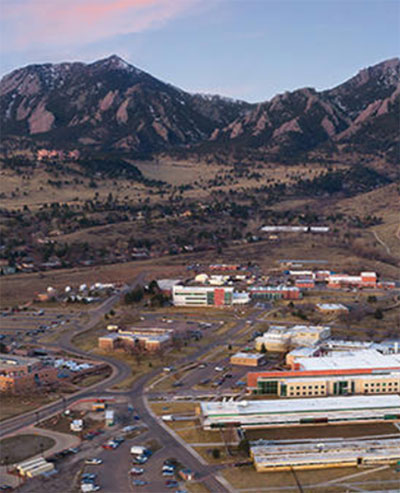
The National Institute of Standards and Technology (NIST) in partnership with RadTech, the non-profit for UV+EB photopolymer technology, announces the publication of the final report from their Photopolymer Additive Manufacturing (PAM) Workshop, held at the National Institute of Standards and Technology in Boulder, Colorado.
The Workshop was organized to identify common challenges and solutions specific to photopolymers, ultraviolet curing, manufacturing processes, and the performance of materials in commercial products. The publication details "Overarching Challenges to Advancing PAM Technology" and offers "Recommended Roadmapped Research Directions" including for: Material science and engineering to characterize PAM materials; Advanced computing for materials discovery and process modelling; Measurement science and standards development for reliable, high-performance PAM; Environmental, health, and safety regulations for safe and responsible PAM adoption; and Opportunities for Industry collaborations to enhance PAM utility. NIST has been instrumental in the growth and development of U.S. technologies, and is at the forefront of the push into photopolymer additive manufacturing, building on ground-breaking work. Please visit the PAM event website for the workshop summary and complete workshop report.
Please also note, coming soon from NIST and RadTech: The PAM workshop identified strong interest among multiple stakeholder groups to develop and disseminate PAM specific characterization methods--NIST and RadTech are organizing a 4-week seminar series that will provide a deep-dive each week on a specific class of characterization techniques (e.g. chemical spectroscopy, mechanical testing, advanced-microscopy).” Details coming soon.
RadTech Elects New President, Board Members
FOR IMMEDIATE RELEASE
Contact: Gary Cohen, 240-497-1243, gary@radtech.org
Chevy Chase, MD (January 6, 2021) RadTech, the nonprofit for ultraviolet and electron beam technologies (UV+EB) is pleased to announce the election of Susan Bailey, from Michelman, as President. Michael Gould, Rahn USA is nominated as president elect to assume office in 2023. In addition, new members elected to serve a two year term include: Neil Cramer, Sartomer; Jonathan Graunke, INX Intl.; Jennifer Heathcote, GEW; Helen Rallis, Sun Chemical; Jake Staples, Wausau Coated Products, Inc. and Dan Theiss, Procter & Gamble.
"The UV+EB community represents a growing number of important technology applications, and we welcome our new Board members to help develop these opportunities," says Dr. Bailey. "Our focus now is working to deliver much needed goods and supplies, including fast custom labeling, printing and packaging; supporting medical suppliers; and offering additive and electronics manufacturers with unique materials. This work requires targeted networking and the sharing of technical and training information that RadTech helps provide."
RadTech thanks Board members who will be rotating off at the end of this year after fulfilling a two term limit: David Biro, Sun Chemical; Mike Bonner, Saint Clair Systems; Christopher Seubert, Ford Motor Com.; Hui Yang, Procter and Gamble; and Sunny Ye, Facebook. In addition, Eileen Weber of allnex now moves to the board position of immediate past president.
RadTech is a nonprofit trade association dedicated to the advancement of UV+EB technologies, providing users with energy savings, lower emissions of harmful substances, enhanced process control, and fast efficient throughput. UV+EB is used in a wide range of applications, including printing, packaging, wood and building products, electronics, and 3D printing/additive manufacturing. RadTech serves as an international forum and source of information for individuals and organizations involved in the use of UV+EB or the supply of equipment, chemicals, or other materials.
<END>
More...
RadTech North America Joins US Plastics Pact
Led by The Recycling Partnership and World Wildlife Fund in partnership with the Ellen MacArthur Foundation, the U.S. Plastics Pact will unify approaches to rethink the way we design, use, and reuse plastic.
December 29, 2020. Bethesda, Md. – The UV+EB Technology Association has joined the U.S. Plastics Pact, a collaborative, solutions-driven initiative intended to drive significant systems change to create a path forward toward a circular economy for plastics in the United States by 2025. The first North American Pact of its kind, the U.S. Pact is a collaboration led by The Recycling Partnership, World Wildlife Fund (WWF), and Ellen MacArthur Foundation.
In recognition of the imperative to realize a circular economy for plastics, the U.S. Pact is convening more than 80 brands, retailers, NGOs, and government agencies to bring one voice to U.S. packaging through coordinated initiatives and innovative solutions for rethinking products, packaging, and business models.
“We are eager to contribute to the U.S. Plastics Pact, bringing our technical expertise and innovative solutions to help create a circular economy for plastics,” says RadTech’s Sustainability Co-Chairs, David Biro, of Sun Chemical and Todd Fayne, of PepsiCo.
The U.S. Plastics Pact looks to define problematic or unnecessary packaging, working towards the increased use of reusable, recyclable, or compostable materials by 2025.
“Together through the U.S. Plastics Pact, we will ignite system change to accelerate progress toward a circular economy,” says Emily Tipaldo, Executive Director of the U.S. Plastics Pact. “The U.S. Pact will mobilize systemwide change through support for upstream innovation and a coordinated national strategy. This unified framework will enable members to fast-track progress toward our ambitious 2025 sustainability goals. Members’ full participation will be vital to reaching our shared goals.”
The first task of the members of the U.S. Plastics Pact will be to establish a “roadmap” in 2021 to identify key milestones and national solutions to achieving the U.S. targets and realize a circular economy in which plastic never becomes waste.
Application Open for RadLaunch UV+EB Technology Accelerator

RadTech and IUVA are inviting all students, university labs, start-ups, and new technology developers to apply to be a part of RadLaunch 2021; the UV+EB technology industry tech-education accelerator focused on unique and novel ultraviolet and electron beam technologies.
Now in its fourth year, RadLaunch recognizes students, university labs, start-ups, and new technology developers working on materials, optics, design, printing, packaging, 3D printing, inkjet, building products, plastics, medical, electronics, disinfection (and more!), in support of the advancement of UV+EB.
For the first time, RadLaunch will honor student awards as scholarships and company awards as grants. In addition, the International Ultraviolet Association (IUVA) is once again partnering with this effort, to recognize UV innovation for public health and the environment.
The deadline for submissions is January 15, with a special virtual celebration of our winners planned for early Spring 2021. For more information, please visit https://radlaunch.org.
RadTech YP: New Mentorship Platform for RadTech Members
RadTech YP: New Mentorship Platform for RadTech Members
A few months ago, RadTech members received a survey to identify young professionals and mentors within our community and important issues for young professionals (YPs). We are happy to present our first major announcement from the RadTech Young Professionals Committee.
RadTech is the first nonprofit trade association to join as a member of the National Academy of Inventors (NAI). NAI honors, encourages, and publicly recognizes academic inventors and innovators in all scientific disciplines.
We have gained special access to a mentorship platform through our NAI membership. We encourage all RadTech members to sign up as a mentor or mentee on the Global Academic Inventors Network (GAIN) here using the email associated with your RadTech membership or with your LinkedIn account.
When you sign up, please make sure to join the RadTech group to connect with other members. You can also join groups with any affiliated universities or technologies. Through creating a profile, you can choose your additional fields of expertise, link your calendars for the program to schedule mentoring sessions. Then the program automatically matches you with mentees or mentors that can help with career development and more. Mentors can link their calendars for the mentees to schedule mentoring sessions according to mentors’ availability and preference.
This is a unique networking platform that will enable members to better connect within our community and academia. We hope you take advantage of this exciting opportunity.
From the RadTech YP Committee
RadTech Virtual Fall Meeting 2020
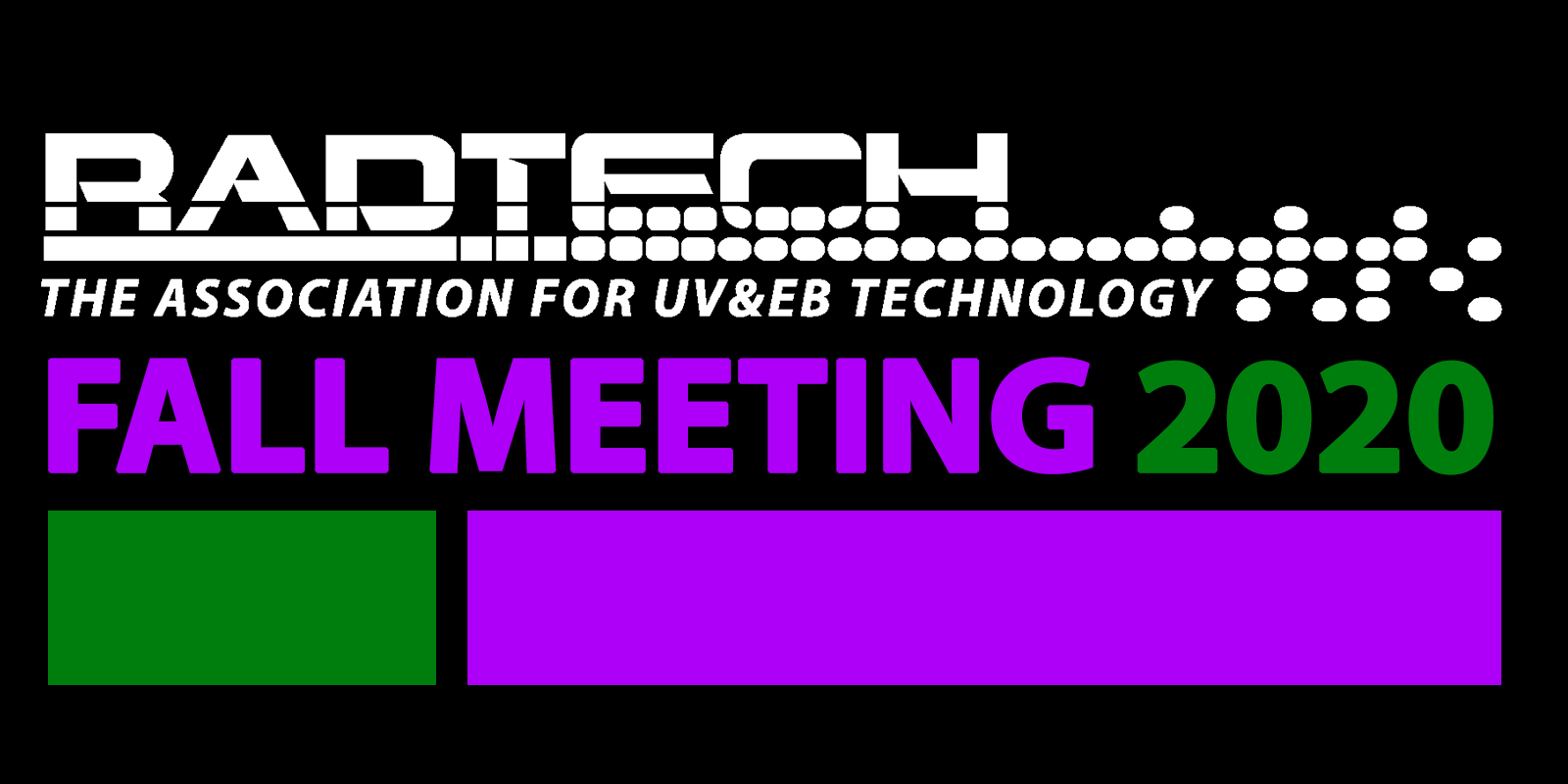
RadTech Virtual Fall Meeting 2020
The 2020 RadTech Fall Meeting will be held online this year and will be a series of three meetings spread out the month of November. You must register for each week separately as they all require unique Meeting IDs and passwords. We hope you will be able to join us!
RadTech Member Update & RadLaunch
November 5, 2020, 2:00 PM - 3:00 PM EST
Speakers & Agenda Added Soon
Registration: https://us02web.zoom.us/meeting/register/tZUld--spjIvHNNYLkjZe7f52hD_pb4fLoz0
3D Printing Committee
November 12, 2020, 2:00 PM - 3:00 PM EST
Opening presentation by Tom McKeag, The Berkeley Center for Green Chemistry
Registration: https://us02web.zoom.us/meeting/register/tZUsce-orzgtEtKEjyuYLNZwqtiGtQ9v5zFH
The industrial sector of additive manufacturing (AM) has experienced double-digit growth over the last decade, as the volume and type of material produced using the seven recognized types of 3D printing has expanded. Initially used mainly for prototyping and specialty production, the growth in the field is now dominated by parts manufacture, an exploration of novel materials, and an expansion of user types, including home use.
While this disruptive technology has enabled the saving of energy and materials, as well as the relatively cheap production of complex shapes, current practices also prompt caution. Many of the chemicals used in AM are of concern; for example, typical SLA resin chemicals may cause skin and eye irritation, skin sensitivity, and aquatic toxicity. As such they also represent a potential cost to businesses such as hazardous waste disposal charges.
This talk will describe some of the recent work by the UC Berkeley Center for Green Chemistry to address human and environmental health challenges in the field of additive manufacturing, and how integrating hazard assessment of the materials used into the research, design and development process can lead to innovation and value.
EHS / Sustainability Committees
November 19, 2020, 2:00 PM - 3:00 PM EST
Speakers & Agenda Added Soon
Registration: https://us02web.zoom.us/meeting/register/tZwtduqvpzkrGN0SF784-7J7uvs5kqYimhQ0
National Academy of Inventors Class Recognizes UV+EB Innovators

… we are honored as the first nonprofit trade association Chapter of NAI
The National Academy of Inventors® is a member organization comprising U.S. and international universities, and governmental and non-profit research institutes, with over 4,000 individual inventor members and Fellows spanning more than 250 institutions worldwide. The NAI publishes the multidisciplinary journal Technology and Innovation, Journal of the National Academy of Inventors®.
RadTech is proud of our member’s significant contributions to productivity, sustainability and the enabling of new technology through UV+EB Technology. Help us promote your UV+EB innovations and inventions and apply to our chapter. For RadTech members, there is no additional charge for NAI Chapter membership.
Congratulations to the RadTech NAI 2020 Inductees
RadTech Member Class of 2020
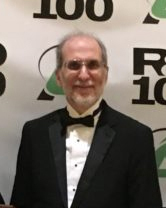
Ben Curatolo
Dr. Ben Curatolo is President of Light Curable Coatings and holds 41 U.S. Patents, including seven U.S. Patents in UV Technology. Ben has developed and commercialized a UV curable industrial floor coating based on biorenewable materials that has been recognized with a 2018 R&D 100 Award and an additional 2018 R&D 100 Special Recognition Merit Award for Green Tech.
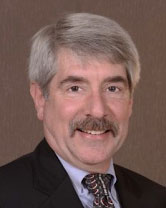
Mike Dvorchak
Mike's work at Bayer Material Science (Covestro) and Allnex on 100% UV cure oligomers and UV cure polyurethane dispersions coatings helped result in over 15 UV+EB US and international patents. He won the best technical paper award at RADTECH North America 2010 conference, and cites his current most exciting projects as: the development of a Shark Skin UV cure coating that could reduce the drag for aerospace vehicles from 7% or higher levels; a methane sensing project using UV cured coatings on fiber optics for a University of Pittsburgh /Department of Energy Project; and authoring a chapter for a current UV cure text book.William Arthur Green, Great Lakes Fine Chemicals
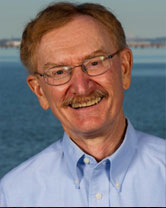
Mike Idacavage
Mike successfully helped develop and commercialize a UV-curable, water-processable newspaper printing plate which became an industry standard. Mike developed several novel products based on Eastman Chemical’s water dispersible polymers. Mike was also responsible for several new products for a by-product, Lignin, from a billion dollar development program at Eastman. Mike has also been recognized as an inventor on patents assigned to his customers.Jim Raymont, EIT Instrument MarketsBenefits of the NAI RadTech Chapter.
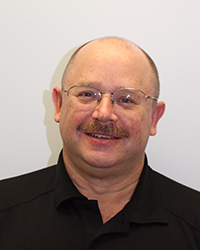
Jim Raymont
Jim has developed products to measure complex 3D shapes both large and small, as part of a very talented family of people at EIT Instruments. He has worked extensively with UV suppliers, customers and potential customers to help them better understand UV measurement and process control.
Special Inductees
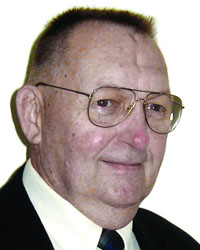
Tony Berejka
Emeritus Inductee
In 1975, Tony developed the radiation processed corrosion protection for the below grade sections of the Alyeska pipeline, which is still by far the single largest ever radiation cure project ($124,000,000 today) and is in still good condition after 45 years—helping to alleviate US dependence on foreign crude. Tony has served as a consultant to the National Academies and its operating arm, the National Research Council, and to the International Atomic Energy Agency dealing with radiation effects. He most recently reviewed a textbook on radiation chemistry and its industrial uses, for a European group.Academic Inductee
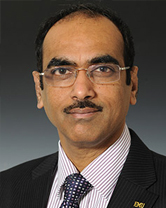
Vijay Mannari
Academic Inductee
Dr. Mannari is a Distinguished Professor, Polymers and Coatings Technology and Director, Coatings Research Institute at Eastern Michigan University. His research group has developed and customized coating materials derived from sustainable resources enabling this technology to be Green + Green. The development of UV-LED Nail Gels based on bio-based materials is one striking example for which a US patent application has been filed. Dr. Mannari’s contributions in UV-initiated crosslinking systems using photo-acid / photo-base has not only expanded cure chemistries (sol-gel, Michael-Addition..) but has opened up possibilities for high-performance and corrosion resistant coatings. A very recent contribution in development and demonstration of advanced UV-Curable materials and process for additive manufacturing (3D-printing) application has earned his research group the RadTech University Emerging Technology Award 2020.Start-up Professional
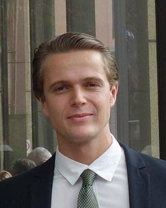
Henry Bilinsky
Start-up—New Innovation
In 2015 Henry invented Direct Contactless Microfabrication (DCM) as a scalable method of printing functional microstructures out of UV-curable materials. Shark-skin inspired “riblet” surfaces printed with DCM have demonstrated a 7% drag reduction and Henry’s company MicroTau has won numerous contracts to develop this technology for the US Air Force—potentially saving billions of dollars in fuel and hundreds of millions of tonnes of CO2 emissions. MicroTau is working to develop functional materials inspired by nature including anti-fouling, anti-bacterial, optical and superhydrophobic properties—using UV-curable coatings by micro-patterning with DCM technology for applications in manufacturing, maritime, medical devices and renewable energy.
The National Academy of Inventors
- Honors, encourages and publicly recognizes academic inventors and innovators in UV+EB Technology.
- Encourages the disclosure of intellectual property and the translation of inventions to benefit society.
- Promotes and enhances the development and commercialization of innovations.
- NAI offers connection with the USPTO, the National Inventors Hall of Fame, and the Association of University Technology Managers (AUTM).
- Provides a mechanism for potentially enhancing innovation both locally and nationally.
- Promotes interaction for fostering new ideas.
- Provides the opportunity to publish in Technology & Intervention, Journal of the National Academy of Inventors.
- Provides a mechanism for developing relevant invention-based activities, such as workshops or symposia on innovation and invention, in collaboration with NAI.
- Puts chapter members in a position to provide advice and guidance to new and existing inventors in their work—with a focus on students and start-ups.
- Enhances the visibility of UV+EB Technology development.
- Listing of chapter members on this website.
- National publicity via press releases through the NAI about the chapter.
- Specially designed NAI lapel pins provided for all inventor members.
The RadTech NAI Executive Committee:
- Mike Dvorchak
- Jennifer Heathcote
- Molly Hladik
- Mike Idacavage
- Eileen Weber
UV Industry Associations Discourage the use of UV Light on the Human Body to Disinfect Against the Coronavirus
FOR IMMEDIATE RELEASE
Contact: Gary Cohen, 240-497-1242, gcohen@iuva.org
Chevy Chase, MD (April 24, 2020) Recent reports suggest that ultraviolet (UV) light can be used on the human body to disinfect against the coronavirus. The International Ultraviolet Association (IUVA) and RadTech North America are educational and advocacy organizations consisting of UV equipment vendors, scientists, engineers, consultants, and members of the medical profession. We would like to inform the public that there are no protocols to advise or to permit the safe use of UV light directly on the human body at the wavelengths and exposures proven to efficiently kill viruses such as SARS-CoV-2. UV light under the conditions known to kill such viruses can cause severe skin burns, skin cancer, and eye damage. There is information that a specific type of UV light, sometimes called “far UV-C” (at wavelengths from 200 - 225 nm) can disinfect viruses without damaging skin and eyes, but this information is considered to be preliminary and there are no protocols to ensure that it is applied effectively and safely. We strongly recommend that anyone using UV light to disinfect medical equipment, surfaces, or air in the context of COVID-19, applications that are supported by sound scientific evidence, follow all recommended health and safety precautions and to avoid direct exposure of the body to the UV light.
Additional Information on UV Technology for Disinfection
The ultraviolet spectrum is a band of electromagnetic radiation at higher energies than visible light, split into four major categories: UV-A (400 – 315 nm), UV-B (315 – 280 nm), UV-C (280 – 200 nm), and vacuum-UV (VUV, 100 – 200 nm). UV-A and UV-B are present in sunlight at the earth’s surface; these parts of the ultraviolet spectrum are common causes of sunburn and, with longer-term exposure, melanoma. The risks of human exposure to UV-A and UV-B are well known. Solar UV may be used for disinfection purposes; exposures in the order of several hours to days might be effective at treating surfaces and water. Artificial sources of UV-A and UV-B are not commonly used for disinfection.
UV-C has been used for disinfection for over a century, with applications in water treatment, air systems, and surfaces. The use of UV-C as a disinfectant is supported by decades of scientific research. UV-C radiation is absorbed by DNA and RNA (the genetic code for all lifeforms), changing its structure. This damage inhibits the ability of the affected cells to reproduce, meaning that they cannot infect and are no longer dangerous. Whereas the UV exposure required to inactivate different microorganisms varies, though there are no known microorganisms that are immune to this treatment and it is regularly used against bacteria, viruses, and protozoa.
In the same way that UV-C can inactivate bacteria and viruses, it can be damaging to human cells too, since our cells also contain DNA. This exposure can cause skin irritation, damage to the cornea, and cell mutations leading to cancer. Exposure to UV-C radiation is regulated globally, with a common agreement on the risk to human health and safe exposure levels. These regulations and standards set limits on allowable daily exposure.
In summary:
- UV-C irradiation of the skin, eyes, or any body part should be avoided wherever possible.
- Always wear appropriate personal protective equipment when handling un-shielded UV-C radiation sources (e.g. long-sleeved clothing, gloves, and a UV-opaque face shield).
- Always use UV-C devices in accordance with the manufacturer’s operating instructions to ensure safe operation, and within appropriate enclosures where light leakage has been controlled, and where the risks have been properly managed.
- The case for far UV-C light (200 - 225 nm) is less certain. While evidence in the laboratory suggests that it may be safe under some conditions, based primarily on animal studies and not on longitudinal human studies, there is a lack of protocols to govern the safe construction and operation of such devices.
